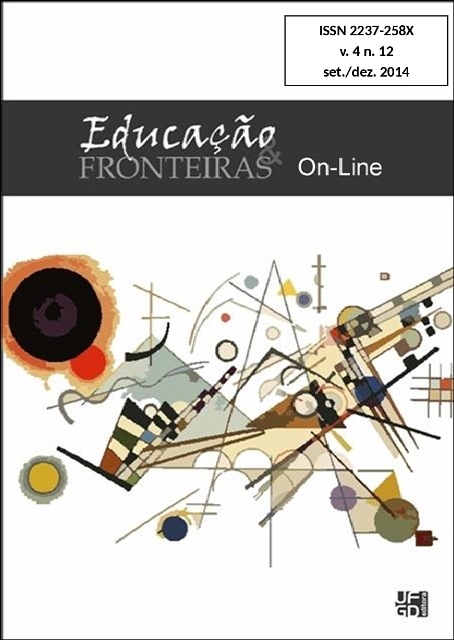Grouped Rural Centers in Spain. Analysis of operation and organization of spanish rural school from a case study
Keywords:
Grouped Rural Centers. Multiages classes. Multilevel Pedagogy. Diversity. Cooperative learning.Abstract
The rural school is a fragile educative institution, in many Spanish places its existence is in danger and the reasons are linked to the decreasing of the rural population. The smaller schools are the more affected. As a palliative action the Grouped Rural Centers (GRC) were created so they could have more opportunities to survive all together. But not all centers can belong to the GRC as some small schools. Due to geographical reasons, it is impossible for them to be part of one of the nearest GRC. For that reason there are some small schools that fight alone to survive. The most peculiar characteristic of the rural school, in addition to its low number of pupils per class, is the coexistence of pupils with different ages in the same class. That is the reason we find the multiages classes in the rural schools that can be more o less pronounced depending on the level of enrollment. The way to work with pupil with different ages in the same class, despite to suppose a great benefit to the interpersonal relationships pupil-pupil, pupils-teacher, and to use different methods of teaching and learning, create many difficulties to the teachers that haven’t been enough prepared in the university to use an appropriate method to the right development of this kind of multiage classes. But the problem of the rural schools goes more beyond the point of a poorly trained teachers to teach in this kind of multiage classes that implements decontextualized educational methods, but also those teachers are novel, discontinuous and few ingrained teachers, that threatens the identity of the rural school. In addition to this point, a lack of resources, materials and infrastructure, incomplete teacher teams and a legislative invisibility, make a real challenge teaching in these schools.Downloads
References
BOIX, R. La escuela rural: funcionamiento y necesidades. Madrid: Praxis, 2004.
BUSTOS, A. La escuela rural. Granada: Octaedro, 2011.
___________. Aproximación a las aulas de escuela rural: heterogeneidad y aprendizaje en los grupos multigrado. Granada: Universidad de Granada. Facultad de Ciencias de la Educación. Departamento de Didáctica y Organización Escolar, 2007.
ESPAÑA (1970). Ley 14/1970 General de Educación y Financiamiento de la Reforma Educativa. BOE nº 187 de 06-08-1970. Disponible en:
http://www.boe.es/diario_boe/txt.php?id=BOE-A-1970-852 Consultado el: 13-05-2015.
________ (1983). Real Decreto 1174/1983, de 27 de abril, sobre Educación Compensatoria. BOE nº 112 de 11-05-1983. Disponible en: http://www.boe.es/diario_boe/txt.php?id=BOEA-1983-13484
Consultado el 13-05-2015.
________ (1986). Real Decreto 2731/1986. Constitución de los Colegios Rurales Agrupados de Educación General Básica. BOE nº 8 de 09-01-1987. Disponible en: http://www.boe.es/buscar/doc.php?id=BOE-A-1987-353 Consultado el 13-05-2015.
________ (2006). Ley Orgánica de Educación 2/2006 de 3 de mayo. BOE nº 106 de 04-05-2006. Disponible en: http://www.boe.es/boe/dias/2006/05/04/pdfs/A17158-17207.pdf
Consultado el: 13-05-2015.
JIMENEZ, J. La escuela unitaria. Barcelona: Laia, 1982.
PEINADOR, M. Observación e investigación de la heterogeneidad y aprendizaje en un aula de Educación Infantil, dentro de una escuela rural. Valladolid: Universidad de Valladolid, 2009.
SALANOVA, J.; JIMENEZ, J. La escuela rural: métodos y contenidos. Lérida: Zero, 1983.
SANTAMARÍA, R. La escuela rural entre 1970 y 1990. Tesis doctoral. Castellón: Universidad Jaume I, 1996.









